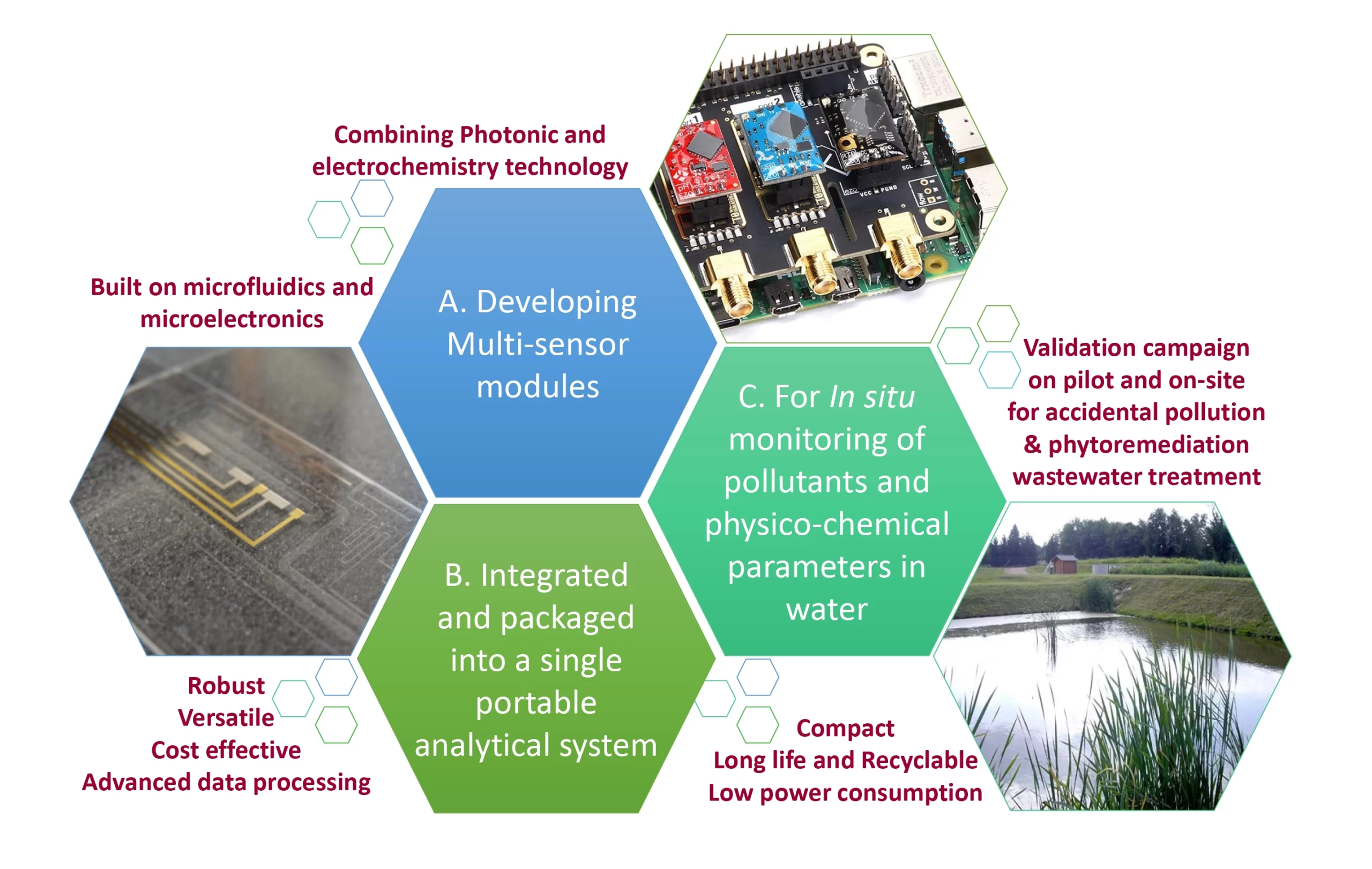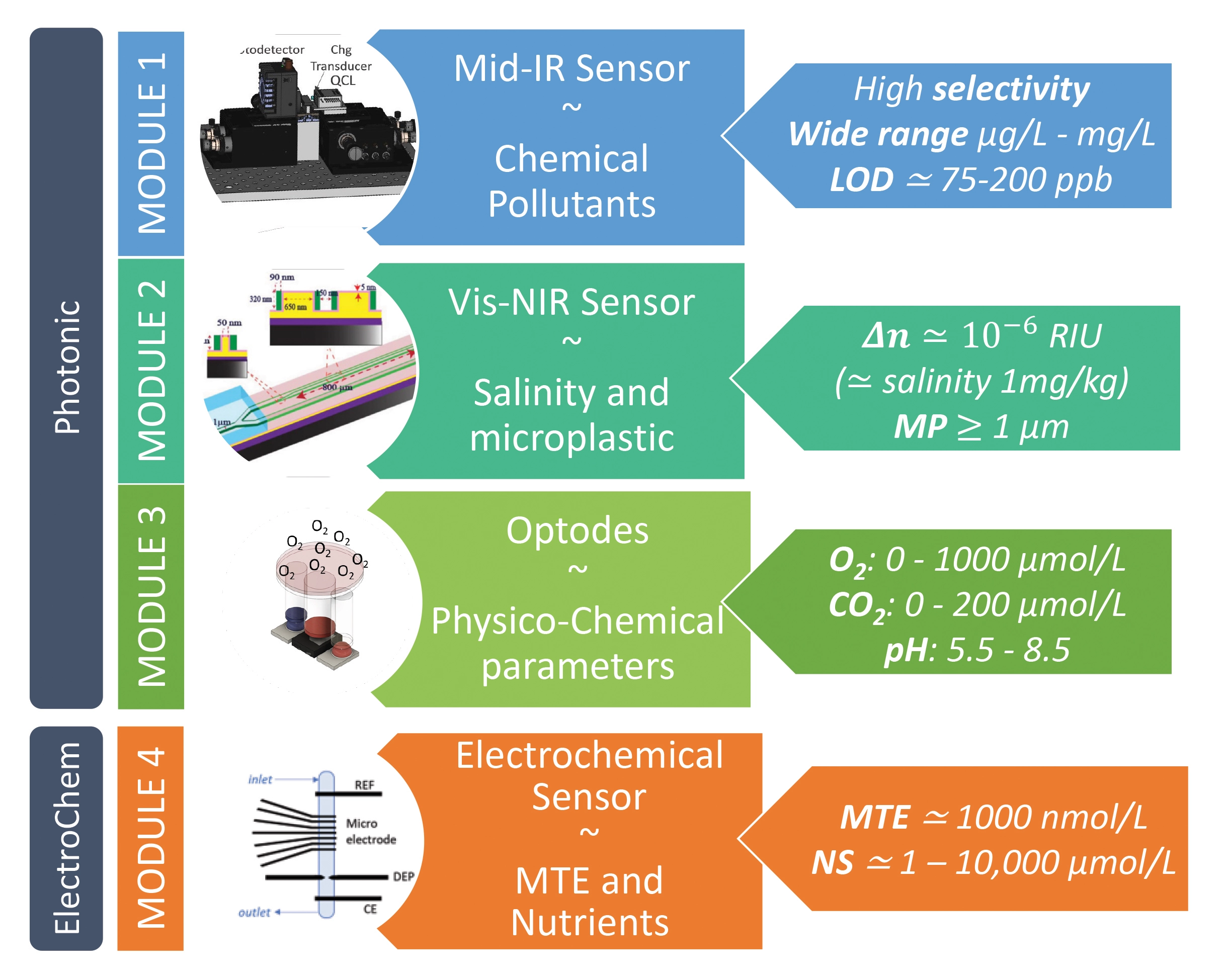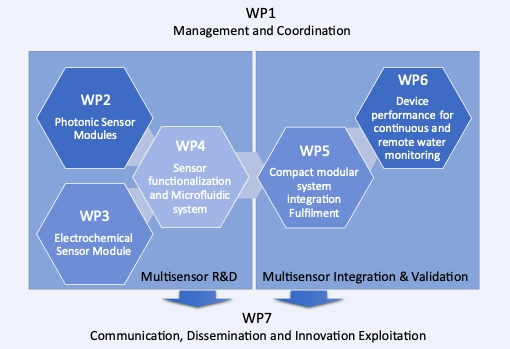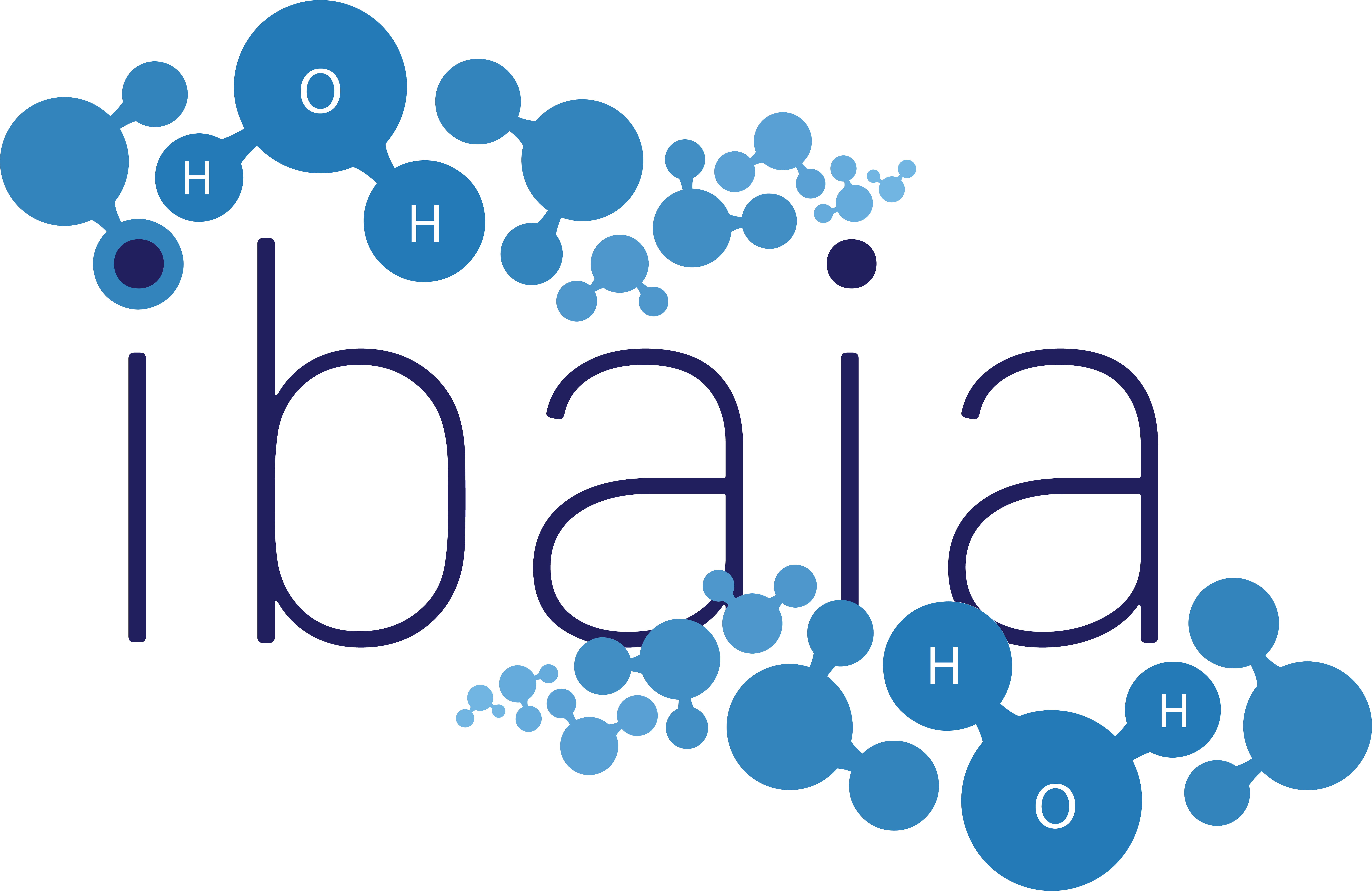
Environmental water pollution is a growing problem on a global scale, resulting in increased regulations and a corresponding rise in demand for improved water quality monitoring solutions. New in situ sensing devices are required to improve water quality monitoring, enable the development of water pollution countermeasures, and facilitate efficient water treatment administration, such as in support of the EU Zero Pollution for Air, Water, and Soil Action Plan, a key element of the European Green Deal.
The Objective
Develop four novel optimally functionalized sensor modules based on complementary photonics and electrochemical technologies. These four sensors will be designed, tested, and packaged into a modular advanced multi-sensing system that will be tested in real-world in situ conditions at the end of the project.

The Technology
The photonic sensors (Mid-IR and Optode) will be functionalized to the targeted molecules in order to increase sensor sensitivity. This will involve research on hydrophobic polymer membranes with suitable water–polymer partition coefficients of hydrocarbons and other organic priority substances based on water composition, salinity, and temperature.
The four standalone modules will be integrated into a single, portable, cost-effective, robust, and flexible multi-sensor device, which will be based on a Single Board Computer connected to a custom Printed Circuit Board that will host the required connectors, hardware interfaces, and any electronic components required to communicate with the sensor modules.
Project Structure
IBAIA project is divided into seven work packages (WP):
Management and coordination
Development of photonic sensor module prototypes for priority substances, microplastics and physical multiparameter monitoring in water
Design and fabrication of electrochemical sensor modules for metallic trace elements and nutrient monitoring in water
Sensor functionalization and microfluidic system implementation to improve priority substances, nutrient salts and metallic trace elements detection and salinity measurements
Fulfilment and validation of the compact modular multi-sensor system integration
Performance of the modular multi-sensor device for continuous and remote water quality monitoring
Communication, dissemination and innovation exploitation

